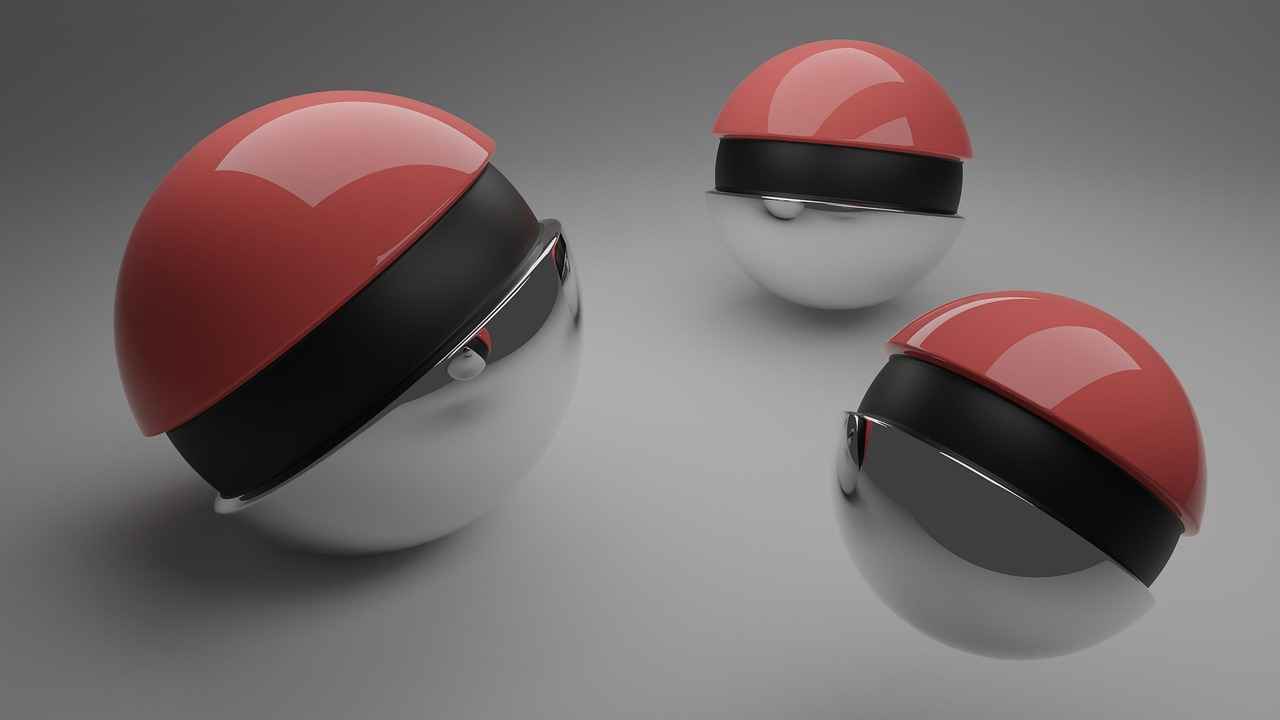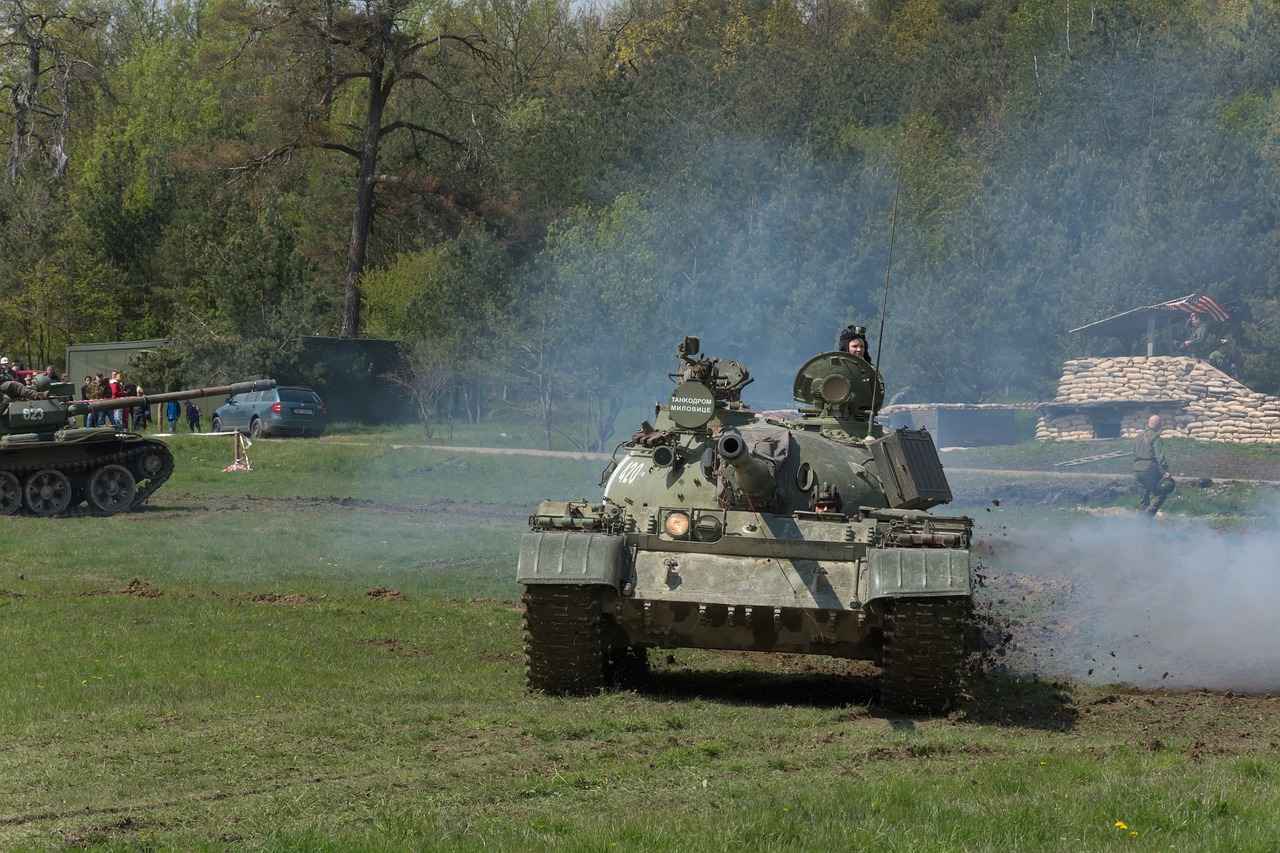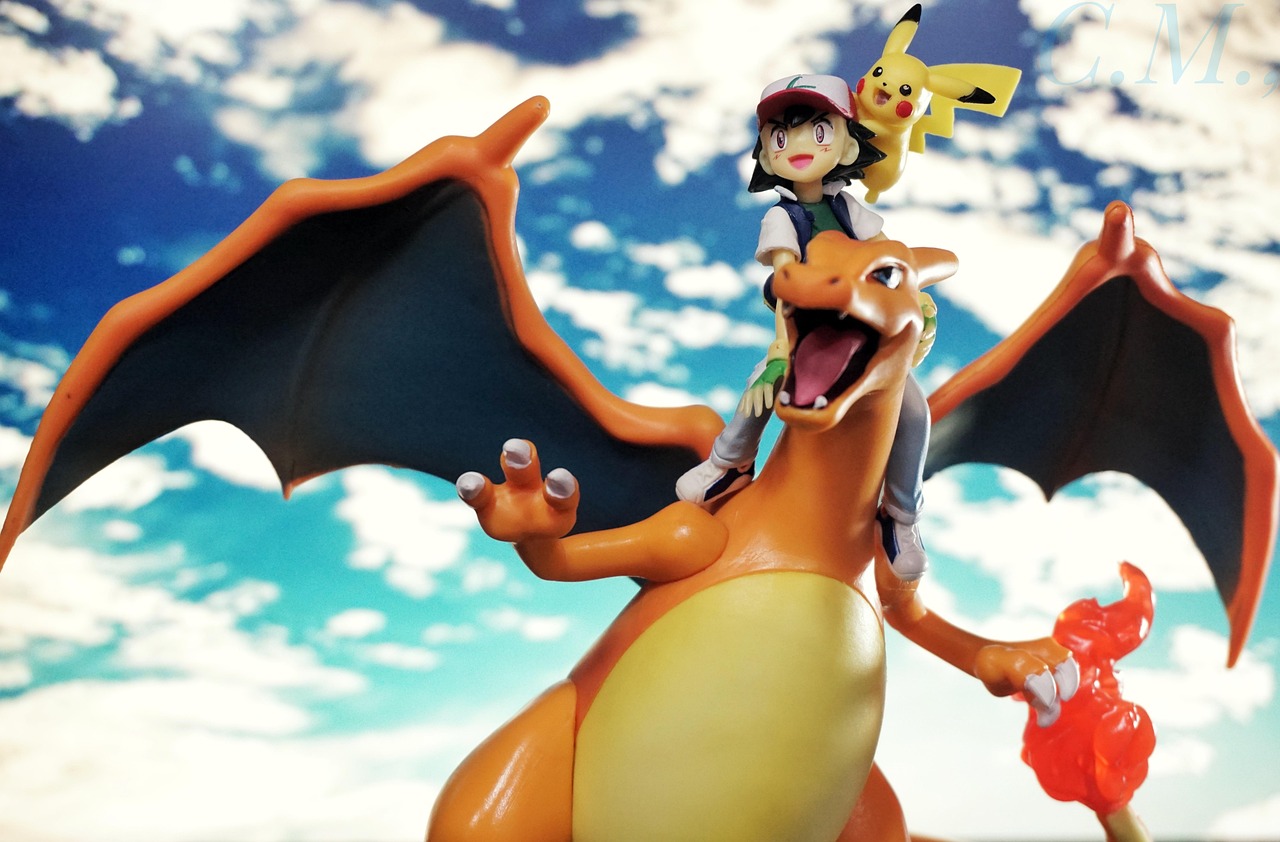Gardevoir is a beloved Pokémon known for its elegant design and powerful abilities. This article delves into the essential aspects of Gardevoir, including its stats, moveset, evolution, and effective strategies for usage in battles. Trainers looking to enhance their gameplay will find valuable insights here.
- Understanding Gardevoir’s Base Stats: Gardevoir boasts impressive base stats that make it a formidable opponent in battles. With a high Special Attack of 125 and Special Defense of 115, it excels in competitive scenarios.
- Gardevoir’s Moveset: Essential Attacks and Strategies: Gardevoir’s moveset is diverse, featuring powerful Psychic and Fairy-type attacks. Here are some key moves:
- Top Offensive Moves for Gardevoir: Its signature moves include Psychic and Moonblast, which leverage its high Special Attack for substantial damage.
- Support Moves: Moves like Calm Mind enhance Gardevoir’s Special Attack and Special Defense, while Will-O-Wisp can cripple physical attackers.
- Defensive Moves: Protect and Heal Pulse allow Gardevoir to support its teammates effectively.
- Evolution of Gardevoir: From Ralts to Kirlia: Gardevoir evolves from Ralts to Kirlia and finally to Gardevoir. Trainers should focus on leveling Ralts through battles to reach Kirlia at level 20. Kirlia can evolve into Gardevoir when exposed to a Dawn Stone.
- Best Nature and Abilities for Gardevoir: Choosing the right nature and abilities is crucial. Timid natures increase Speed, while Modest natures boost Special Attack. Gardevoir’s Trace ability allows it to copy opponents’ abilities, providing strategic advantages.
- How to Use Gardevoir Effectively in Battles: To maximize Gardevoir’s potential, trainers should understand its strengths and weaknesses. It excels against Fighting and Dragon types but struggles against Steel and Poison types. Building a balanced team that covers Gardevoir’s weaknesses enhances overall strategy.
Conclusion: Mastering Gardevoir involves a comprehensive understanding of its stats, moveset, evolution, and battle strategies. With proper preparation and strategic planning, Gardevoir can become a formidable ally in any trainer’s team.

Understanding Gardevoir’s Base Stats
Gardevoir, a beloved Pokémon from the Fairy and Psychic types, has garnered attention in the competitive scene due to its impressive base stats. Understanding these stats is crucial for trainers looking to maximize Gardevoir’s potential in battles.
Gardevoir boasts a remarkable combination of base stats that make it a formidable opponent in various battle scenarios. Its high Special Attack and Special Defense allow it to excel against a wide range of opponents. Here is a breakdown of Gardevoir’s base stats:
| Stat | Value |
|---|---|
| HP | 68 |
| Attack | 65 |
| Defense | 65 |
| Special Attack | 125 |
| Special Defense | 115 |
| Speed | 80 |
With a Special Attack of 125, Gardevoir can deliver devastating blows to its opponents, making it a top choice for trainers who prefer offensive strategies. Meanwhile, its Special Defense of 115 ensures it can withstand hits from powerful special attackers, allowing it to stay in the battle longer.
Moreover, Gardevoir’s balanced Speed stat of 80 enables it to outspeed many common threats, providing opportunities to strike first. This combination of offensive and defensive capabilities makes Gardevoir a versatile Pokémon in competitive play.
In summary, Gardevoir’s impressive base stats not only make it a formidable opponent but also provide trainers with various strategies to explore in battles. Understanding these stats is essential for anyone looking to utilize Gardevoir effectively in their Pokémon journey.

Gardevoir’s Moveset: Essential Attacks and Strategies
Gardevoir is renowned for its diverse moveset, which includes a variety of powerful Psychic and Fairy-type attacks. This versatility allows Gardevoir to adapt to different battle scenarios, making it a valuable asset to any trainer’s team. In this section, we will explore the best moves to equip Gardevoir with, ensuring optimal performance in battles.
| Move | Type | Category | Power | Accuracy |
|---|---|---|---|---|
| Psychic | Psychic | Special | 90 | 100% |
| Moonblast | Fairy | Special | 95 | 100% |
| Calm Mind | Psychic | Status | N/A | N/A |
| Will-O-Wisp | Fire | Status | N/A | 85% |
Top Offensive Moves for Gardevoir
- Psychic: This move provides strong STAB (Same Type Attack Bonus) damage, allowing Gardevoir to hit hard against opponents.
- Moonblast: A powerful Fairy-type attack that is particularly effective against Dragon and Dark types, enhancing Gardevoir’s overall versatility.
Support Moves: Calm Mind and Will-O-Wisp
- Calm Mind: This move boosts both Gardevoir’s Special Attack and Special Defense, making it more formidable in prolonged battles.
- Will-O-Wisp: Inflicting burn status on opponents not only weakens physical attackers but also provides Gardevoir with a strategic advantage.
Defensive Moves: Protect and Heal Pulse
- Protect: This move allows Gardevoir to shield itself from incoming attacks, providing a crucial turn to strategize.
- Heal Pulse: A supportive move that enables Gardevoir to restore the health of its allies, enhancing team synergy.
In conclusion, Gardevoir’s moveset is not only diverse but also strategically rich. By selecting the right combination of offensive and support moves, trainers can maximize Gardevoir’s potential in battles, ensuring it remains a powerful contender on the battlefield.
Top Offensive Moves for Gardevoir
Gardevoir, a Psychic/Fairy-type Pokémon, is known for its formidable presence in battles, primarily due to its exceptional moveset. In this section, we will delve into the top offensive moves that Gardevoir can utilize to maximize its damage output and effectiveness in combat.
Gardevoir can utilize several offensive moves, including Psychic and Moonblast. These attacks capitalize on its high Special Attack, allowing it to deal significant damage to opponents. The synergy between these moves not only enhances its offensive capabilities but also provides strategic advantages in various battle scenarios.
- Psychic: This move is a powerful STAB (Same Type Attack Bonus) option that benefits from Gardevoir’s impressive Special Attack stat. Psychic is effective against Fighting and Poison types, making it a reliable choice against common threats.
- Moonblast: As a Fairy-type move, Moonblast offers excellent coverage against Dragon, Dark, and Fighting types. Its high base power and the chance to lower the opponent’s Special Attack make it a valuable addition to Gardevoir’s arsenal.
- Shadow Ball: This Ghost-type move provides Gardevoir with coverage against Psychic-types and is particularly useful for hitting Ghost-type Pokémon hard, taking advantage of its high Special Attack.
- Energy Ball: For those looking to counter Water and Ground types, Energy Ball is a great option. This Grass-type move adds versatility to Gardevoir’s moveset, allowing it to handle a wider range of opponents.
In addition to these powerful moves, trainers can consider using Calm Mind to boost Gardevoir’s Special Attack and Special Defense, setting up for a more formidable offensive presence. By understanding and utilizing these moves effectively, trainers can ensure that Gardevoir remains a pivotal force in their teams.
Special Attacks: Psychic and Moonblast
Gardevoir, a dual-type Psychic and Fairy Pokémon, showcases its prowess in battles with exceptional Special Attack capabilities. One of its most formidable moves is Psychic, which not only benefits from the Same Type Attack Bonus (STAB) but also delivers significant damage to a wide array of opponents. This makes Psychic a staple in Gardevoir’s moveset, allowing it to capitalize on its high Special Attack stat effectively.
In addition to Psychic, Gardevoir can learn Moonblast, a powerful Fairy-type move that provides crucial coverage against formidable foes such as Dragon and Dark types. This versatility is essential in competitive play, as it allows Gardevoir to counter threats that would otherwise pose a challenge. The combination of Psychic and Moonblast not only enhances Gardevoir’s offensive capabilities but also makes it a more unpredictable opponent, as trainers must be cautious about which move Gardevoir will use next.
Furthermore, Gardevoir’s access to these two strong attacks enables it to function effectively in various battle scenarios. Trainers can utilize Psychic to deal with Fighting types, while switching to Moonblast can quickly turn the tide against Dragon types, who often underestimate Gardevoir’s potential. This strategic flexibility is what sets Gardevoir apart from many other Pokémon, making it a valuable addition to any team.
In conclusion, the combination of Psychic and Moonblast not only maximizes Gardevoir’s damage output but also enhances its role as a versatile attacker on the battlefield. Trainers looking to harness Gardevoir’s full potential should prioritize these moves to ensure they can tackle a wide range of opponents effectively.
Support Moves: Calm Mind and Will-O-Wisp
Gardevoir, a beloved Psychic/Fairy-type Pokémon, is known for its elegant appearance and powerful abilities. Among its many moves, Calm Mind and Will-O-Wisp stand out as particularly effective support options that can significantly enhance Gardevoir’s performance in battles.
Calm Mind is a strategic move that allows Gardevoir to boost its Special Attack and Special Defense simultaneously. By increasing these stats, Gardevoir becomes a formidable opponent capable of dealing heavy damage while also withstanding powerful special attacks from adversaries. This makes it especially useful in prolonged battles where endurance is key. As Gardevoir accumulates Calm Mind boosts, it can sweep through teams with enhanced offensive capabilities, while its increased Special Defense helps it resist incoming hits.
On the other hand, Will-O-Wisp is an excellent status move that inflicts a burn on the target. This burn not only deals residual damage each turn but also significantly reduces the physical attack power of opponents. By employing Will-O-Wisp, Gardevoir can effectively neutralize threats from physical attackers, allowing it to survive longer in battles. This dual functionality of Will-O-Wisp makes it a versatile choice for Gardevoir, as it can shift the momentum of a battle by crippling opposing Pokémon.
In summary, utilizing Calm Mind and Will-O-Wisp in Gardevoir’s moveset provides trainers with strategic advantages. Calm Mind enhances Gardevoir’s survivability and offensive capabilities, while Will-O-Wisp serves as a countermeasure against physical threats. Together, these moves enable Gardevoir to thrive in various battle scenarios, making it a valuable asset in any trainer’s roster.
Defensive Moves: Protect and Heal Pulse
In the world of Pokémon battles, Gardevoir shines not only as a powerful offensive attacker but also as a valuable defensive asset. With the right moves, Gardevoir can effectively support its teammates while safeguarding its own health. Two key moves that exemplify this defensive role are Protect and Heal Pulse.
- Protect: This move allows Gardevoir to shield itself from all effects of moves that target it during the turn it is used. This is particularly useful for avoiding damage from powerful attacks, giving Gardevoir a chance to assess the battlefield and strategize for the next move. By using Protect, trainers can also stall for time to allow teammates to recover or set up.
- Heal Pulse: This supportive move enables Gardevoir to restore a significant amount of health to a chosen ally. By using Heal Pulse, Gardevoir can turn the tide of battle, ensuring that its teammates remain in fighting shape. This move is especially beneficial in double battles, where maintaining the health of both Pokémon can lead to strategic advantages.
When utilized together, these moves allow Gardevoir to play a pivotal role in team dynamics. For instance, by using Protect to avoid incoming damage, Gardevoir can then follow up with Heal Pulse on a struggling teammate, ensuring that both Gardevoir and its ally remain in the fight longer. This combination not only enhances survivability but also fosters a sense of teamwork that can be crucial in high-stakes battles.
In conclusion, incorporating Protect and Heal Pulse into Gardevoir’s moveset not only maximizes its defensive capabilities but also enhances its overall utility in battles. Trainers looking to optimize Gardevoir’s performance should consider these moves as essential components of a well-rounded strategy.

Evolution of Gardevoir: From Ralts to Kirlia
The evolution of Gardevoir is a fascinating journey that every Pokémon trainer should understand. Gardevoir evolves from Ralts to Kirlia and finally to Gardevoir, marking significant milestones in its development. This evolution process is essential for trainers aiming to cultivate a powerful Gardevoir that can excel in battles.
How Ralts Evolves into Kirlia
Ralts, the first stage of this evolutionary line, evolves into Kirlia at level 20. Trainers can achieve this by engaging Ralts in battles and gaining experience points. It is crucial to focus on leveling up Ralts through various training methods, including participating in Gym battles and defeating wild Pokémon.
Transition from Kirlia to Gardevoir
Once you have a Kirlia, the next step is to evolve it into Gardevoir. This evolution can be achieved by using a Dawn Stone. However, trainers should be aware that Kirlia also has the option to evolve into Gallade when exposed to the same stone, giving trainers a choice based on their battle strategy and team composition.
Strategic Importance of Evolution
Understanding this evolution process is not just about achieving a higher Pokémon level; it’s about unlocking Gardevoir’s full potential. Each stage brings unique abilities and stats that can significantly impact battle outcomes. As Gardevoir, it gains access to powerful moves and enhanced stats, making it a valuable asset in any trainer’s lineup.
Conclusion
In summary, the evolution from Ralts to Kirlia and finally to Gardevoir is a critical journey for trainers. By focusing on leveling Ralts effectively and making strategic choices during evolution, trainers can develop a formidable Gardevoir, ready to take on any challenge in battles.
How to Evolve Ralts into Kirlia
Ralts, a Psychic/Fairy-type Pokémon, is known for its adorable appearance and potential for powerful evolutions. To harness this potential, trainers must focus on evolving Ralts into Kirlia, which occurs at level 20. This evolution is a significant milestone in Ralts’ journey, marking the first step towards becoming the formidable Gardevoir.
To effectively evolve Ralts into Kirlia, trainers should engage in battles and seek out opportunities to gain experience points (XP). Each battle won contributes to Ralts’ growth, making it essential to select opponents that provide ample XP while ensuring Ralts can hold its own in combat. Here are some strategies to consider:
- Participate in Trainer Battles: Engaging with other trainers can yield higher XP rewards compared to wild Pokémon.
- Utilize XP Boosting Items: Items such as the Exp. Share can help Ralts gain experience even when not directly involved in battles.
- Focus on Weak Opponents: Targeting Pokémon that Ralts has a type advantage over can ensure easier victories and quicker leveling.
As Ralts progresses and reaches level 20, trainers will witness the exciting transformation into Kirlia. This evolution not only enhances Ralts’ stats but also unlocks new abilities and moves, allowing for greater versatility in battles. Trainers should be prepared to adapt their strategies as Kirlia, now equipped with stronger Psychic-type moves, can take on a wider range of opponents.
In summary, evolving Ralts into Kirlia is a crucial step for any trainer looking to build a strong team. By focusing on leveling up through battles and experience points, trainers can ensure their Ralts evolves successfully, paving the way for future growth and development into Gardevoir.
Kirlia to Gardevoir: The Final Evolution
Kirlia, the elegant Psychic/Fairy-type Pokémon, represents a crucial stage in its evolutionary line. When trainers nurture their Kirlia, they have a pivotal choice to make regarding its evolution. Kirlia can evolve into either Gardevoir or Gallade, depending on the trainer’s strategy and the use of specific evolution stones.
To evolve Kirlia into Gardevoir, trainers must use a Dawn Stone. This evolution not only enhances Kirlia’s stats but also transforms it into a Pokémon known for its high Special Attack and Special Defense. Gardevoir is particularly valued in competitive play for its ability to deal substantial damage while also providing support to its team.
Choosing to evolve Kirlia into Gardevoir can be advantageous for trainers focusing on special attacks. Gardevoir’s access to powerful moves like Psychic and Moonblast makes it a formidable opponent against various types, including Fighting and Dragon Pokémon. This versatility allows Gardevoir to fit seamlessly into many team compositions.
On the other hand, trainers who opt for Gallade, which requires a different approach and the use of a Dusk Stone, will find a Pokémon that excels in physical attacks and has a different strategic role. The decision ultimately hinges on the trainer’s battle strategy and the role they wish their Pokémon to play in their team.
In summary, evolving Kirlia into Gardevoir is a significant decision for trainers. It opens up a world of strategic possibilities, allowing Gardevoir to shine in battles with its exceptional capabilities. Trainers should consider their overall team strategy and the specific roles they need to fill when making this crucial choice.

Best Nature and Abilities for Gardevoir
Choosing the right nature and ability for Gardevoir is crucial for optimizing its performance in battles. This Pokémon, known for its impressive Special Attack and Special Defense, can be tailored to fit various strategies depending on the trainer’s preferences. Below, we explore the best options to maximize Gardevoir’s potential.
Recommended Natures: Timid or Modest
- Timid: This nature increases Gardevoir’s Speed, allowing it to outspeed many opponents, which is particularly beneficial in competitive battles. With a higher Speed, Gardevoir can strike first, potentially knocking out threats before they have a chance to retaliate.
- Modest: This nature boosts Gardevoir’s Special Attack, enhancing its damage output significantly. Trainers who prefer a more offensive strategy may opt for Modest to maximize the power of its special moves.
Abilities: Trace vs. Telepathy
| Ability | Description |
|---|---|
| Trace | Allows Gardevoir to copy an opponent’s ability, providing strategic advantages. This can be particularly useful against Pokémon with abilities that can hinder them or bolster Gardevoir’s own performance. |
| Telepathy | Helps Gardevoir avoid damage from teammates’ moves in double battles, making it an excellent choice for team play where positioning and strategy are key. |
In summary, the choice of nature and ability for Gardevoir should align with the trainer’s overall strategy. Whether prioritizing speed or power, understanding these elements can greatly enhance Gardevoir’s effectiveness in battles. By carefully selecting the right nature and ability, trainers can ensure that their Gardevoir reaches its full potential on the battlefield.
Recommended Natures: Timid or Modest
When it comes to optimizing Gardevoir for battles, selecting the right nature is crucial. The two most popular natures for Gardevoir are Timid and Modest. Each of these natures offers unique advantages that can significantly influence Gardevoir’s performance in competitive play.
- Timid Nature: This nature increases Gardevoir’s Speed stat, allowing it to outspeed many opponents. By outspeeding foes, Gardevoir can strike first, which is essential in fast-paced battles. This can be particularly advantageous against other Special Attackers that may pose a threat.
- Modest Nature: In contrast, choosing a Modest nature boosts Gardevoir’s Special Attack, enhancing its damage output. This is especially beneficial when Gardevoir is equipped with powerful moves like Psychic and Moonblast, allowing it to deal significant damage and potentially knock out opponents before they can retaliate.
Ultimately, the choice between Timid and Modest should align with your overall battle strategy. If your team requires a faster Gardevoir to control the pace of the battle, then Timid is the way to go. On the other hand, if maximizing damage is your primary goal, then Modest will serve you better.
In summary, understanding the implications of each nature can greatly enhance Gardevoir’s effectiveness in battles. Whether you choose Timid for speed or Modest for power, tailoring Gardevoir to your strategy will provide a competitive edge.
Abilities: Trace vs. Telepathy
Gardevoir is a Psychic/Fairy-type Pokémon known for its unique abilities that can turn the tide of battle. Among its abilities, Trace and Telepathy stand out, each offering distinct advantages in various combat scenarios. Understanding these abilities is crucial for trainers looking to maximize Gardevoir’s effectiveness in battles.
Trace is a remarkable ability that allows Gardevoir to copy an opponent’s ability when it enters the battle. This can provide significant strategic advantages, particularly against opponents with powerful abilities. For example, if Gardevoir faces a Pokémon with Intimidate, it can lower the opponent’s Attack stat upon entering the field, giving it an edge right from the start. Additionally, if the opposing Pokémon has an ability that enhances its performance, such as Speed Boost, Gardevoir can utilize that to its advantage, potentially turning the matchup in its favor.
On the other hand, Telepathy is especially beneficial in double battles. This ability allows Gardevoir to avoid damage from its teammates’ moves, which can be crucial in maintaining its health and ensuring it can continue to support the team. For instance, if a teammate uses a move like Earthquake, Gardevoir will be unaffected, allowing it to focus on attacking or using support moves without the worry of friendly fire. This can lead to a more cohesive team strategy and enable trainers to execute complex battle plans without risking damage to their own Pokémon.
Ultimately, the choice between Trace and Telepathy depends on the trainer’s battle strategy and the type of battles they engage in. While Trace can offer powerful counters against specific opponents, Telepathy shines in multi-Pokémon scenarios, providing safety and synergy. Understanding these abilities allows trainers to make informed decisions when utilizing Gardevoir in their teams.

How to Use Gardevoir Effectively in Battles
Utilizing Gardevoir in battles is a rewarding experience that requires a blend of strategic planning and a deep understanding of its unique capabilities. As a Psychic/Fairy-type Pokémon, Gardevoir possesses a range of strengths that can be leveraged to dominate opponents, but it also has specific vulnerabilities that trainers must navigate.
1. Exploiting Gardevoir’s Strengths
- High Special Attack: Gardevoir’s exceptional Special Attack stat allows it to deal significant damage with moves like Psychic and Moonblast.
- Type Advantages: Gardevoir excels against Fighting and Dragon-type Pokémon, making it an excellent choice against these common threats.
2. Mitigating Gardevoir’s Weaknesses
- Vulnerability to Steel and Poison: Trainers should be cautious around Steel and Poison-type moves, which can severely weaken Gardevoir.
- Team Support: Pairing Gardevoir with Pokémon that can counter these weaknesses, such as Fire or Fairy types, can enhance its survivability.
3. Optimal Moveset for Gardevoir
To maximize Gardevoir’s effectiveness, trainers should consider a moveset that balances offensive and defensive capabilities:
- Psychic: A powerful STAB move that benefits from Gardevoir’s high Special Attack.
- Moonblast: Provides essential coverage against Dark and Dragon types.
- Calm Mind: Increases Gardevoir’s Special Attack and Special Defense, allowing it to withstand hits while boosting its own damage output.
- Protect: A defensive maneuver that allows Gardevoir to avoid damage while waiting for an opportunity to strike.
4. Team Composition and Synergy
Integrating Gardevoir into a well-rounded team is crucial. Consider including Pokémon that can absorb hits for Gardevoir or set up entry hazards to weaken opponents. This synergy can create opportunities for Gardevoir to shine.
Conclusion: Mastering Gardevoir’s potential in battles requires an understanding of its strengths, weaknesses, and optimal strategies. By employing careful planning and team synergy, trainers can ensure that Gardevoir becomes a formidable force in their Pokémon battles.
Countering Opponents: Strengths and Weaknesses
Gardevoir is a Psychic/Fairy type Pokémon known for its remarkable abilities in battle. It excels particularly against Fighting and Dragon types, making it a valuable asset for trainers looking to counter these popular Pokémon. However, it is essential to be aware of its vulnerabilities, particularly to Steel and Poison types.
To maximize Gardevoir’s effectiveness, trainers should focus on the following strategies:
- Leverage Strengths: Gardevoir’s high Special Attack allows it to deal significant damage to Fighting and Dragon types. Moves like Moonblast and Psychic take full advantage of this strength, ensuring that Gardevoir can quickly eliminate threats.
- Avoid Vulnerabilities: When facing Steel or Poison types, it’s crucial to switch Gardevoir out to avoid taking heavy damage. Pokémon like Fire or Ground types can be effective counters to these threats, allowing Gardevoir to remain in the game without unnecessary risk.
- Utilize Support Moves: Incorporating support moves such as Calm Mind can bolster Gardevoir’s defenses and offensive capabilities, making it tougher for opponents to take down.
- Team Synergy: Building a well-rounded team that can cover Gardevoir’s weaknesses is essential. Pairing it with Pokémon that can handle Steel and Poison types will create a more balanced approach to battles.
By understanding Gardevoir’s strengths and weaknesses, trainers can develop effective strategies to dominate in battles. Its ability to counter specific types while requiring careful management against others makes it a unique and powerful Pokémon.
Team Composition: Synergy with Other Pokémon
In the competitive world of Pokémon battles, team composition plays a crucial role in achieving success. Including Gardevoir in a well-balanced team can significantly enhance its effectiveness. To maximize Gardevoir’s potential, it is essential to pair it with Pokémon that can cover its weaknesses and complement its strengths.
- Covering Weaknesses: Gardevoir is vulnerable to Steel and Poison types. Therefore, including Pokémon like Ferrothorn or Gardevoir can help mitigate these threats. Ferrothorn’s resistance to these types allows it to absorb hits, providing Gardevoir the opportunity to strike back.
- Enhancing Offensive Capabilities: Pairing Gardevoir with strong physical attackers, such as Excadrill or Lucario, can create a balanced offensive strategy. These Pokémon can deal with threats that Gardevoir may struggle against, such as Dark and Steel types, while Gardevoir can handle Fighting and Dragon types effectively.
- Support Roles: Including Pokémon that provide support moves, like Clefable or Whimsicott, can enhance Gardevoir’s performance. These Pokémon can set up screens or use status moves to control the battlefield, allowing Gardevoir to shine in its offensive role.
Furthermore, having a well-rounded team allows for flexibility in battle. Trainers can switch between Pokémon to adapt to their opponent’s strategy, making it harder for them to predict Gardevoir’s moves. By maintaining a diverse team, trainers can ensure that Gardevoir remains a formidable force in any battle scenario.
In conclusion, the key to utilizing Gardevoir effectively lies in its team composition. By surrounding it with Pokémon that cover its weaknesses and enhance its strengths, trainers can create a synergistic team capable of overcoming various challenges in Pokémon battles.

Conclusion: Mastering Gardevoir in Pokémon Battles
In the realm of Pokémon battles, mastering Gardevoir is not just about having a strong Pokémon; it requires a deep understanding of its unique attributes and capabilities. Gardevoir, a Psychic/Fairy type, stands out due to its impressive base stats that include high Special Attack and Special Defense, making it a formidable contender in competitive scenarios.
To truly harness Gardevoir’s potential, trainers must familiarize themselves with its moveset. Key attacks such as Psychic and Moonblast allow Gardevoir to deal significant damage while providing coverage against various opponents. Additionally, utilizing support moves like Calm Mind can enhance Gardevoir’s survivability and offensive capabilities during prolonged battles.
The evolution process of Gardevoir, from Ralts to Kirlia and finally to Gardevoir, is crucial for trainers to understand. Each evolution phase presents opportunities for growth and development, ultimately leading to Gardevoir’s full potential. Trainers must also consider the best nature and abilities for Gardevoir, as choices like Timid or Modest natures can significantly influence its performance.
Furthermore, effective usage of Gardevoir in battles involves strategic planning. Understanding its strengths against certain types, such as Fighting and Dragon, while being cautious of its vulnerabilities to Steel and Poison, can turn the tide of battle in your favor. Pairing Gardevoir with complementary Pokémon can also enhance team synergy.
In summary, mastering Gardevoir is a multifaceted endeavor that requires knowledge of its stats, moveset, evolution, and strategic applications in battles. With diligent preparation and informed strategies, Gardevoir can become an invaluable member of any trainer’s team, capable of overcoming various challenges in the Pokémon universe.
